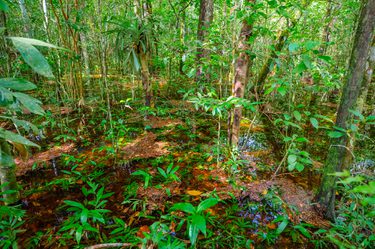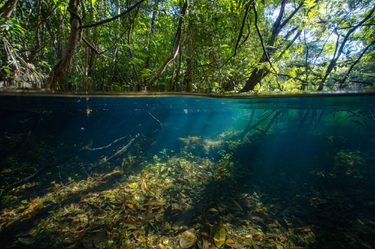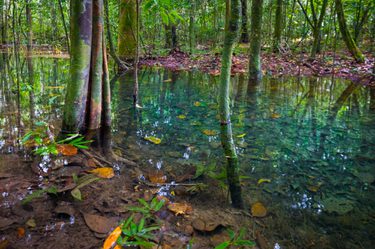





In areas of lower ground, the flooding remains for an extended period, forming lakes beside the rivers Cristalino and Teles Pires. Once the rainy season has ended, the water level diminishes until the lakes have disappeared altogether and the land is dry throughout the rest of the dry season. In contrast, the higher areas are flooded for a much shorter period and have some taller trees, growing up to 25 meters and with a circumference of 60 cm, standing out amongst the lower vegetation. There are also fewer epiphytes and lianas here.
Notable among the leading families of medium sized to large trees are the Leguminosae: Jutahy Ironwood (Dialium guianense), Guamas (Inga pruriens and Zygia latifolia), Arapari (Macrolobium acaciifolium), Mututi (Pterocarpus santalinoides), Yellow-muirajibóia Ironwood (Swartzia recurva) and Tachi (Tachigali cf. myrmecophila).

Canoeing through a flooded forest, paddling among the trees.
Among the leading families of smaller trees and shrubs are Apocynaceae: Chicle (Malouetia tamaquarina) and Chrysobalanaceae: Pigeonberry (Hirtella racemosa). And there are also young individual specimens of canopy trees.
Notable among the epiphytes is the Araceae family: such as the Heteropsis genus (Heteropsis tenuispadix) and among the vine families are the Connaraceae: Connarus genus (Connarus punctatus); Passifloraceae: Passion Flower variant (Passiflora misera); and Polygalaceae: Moutabea genus (Moutabea guianensis).
